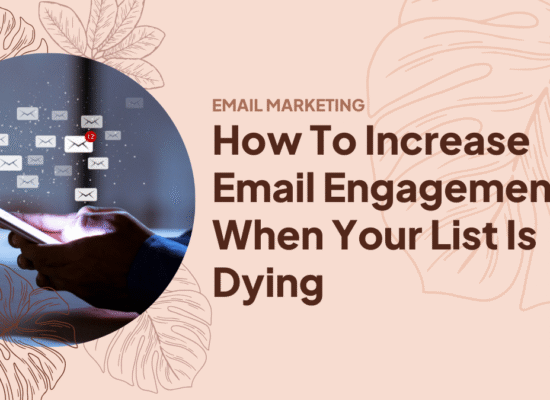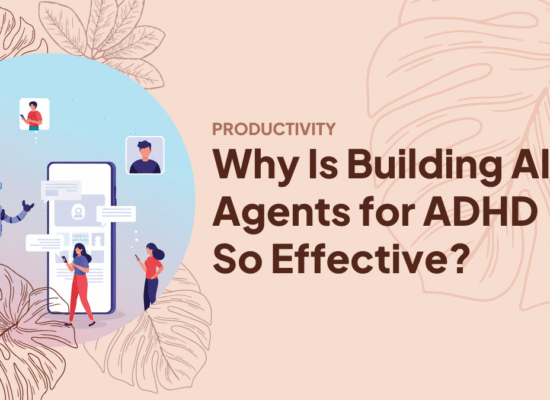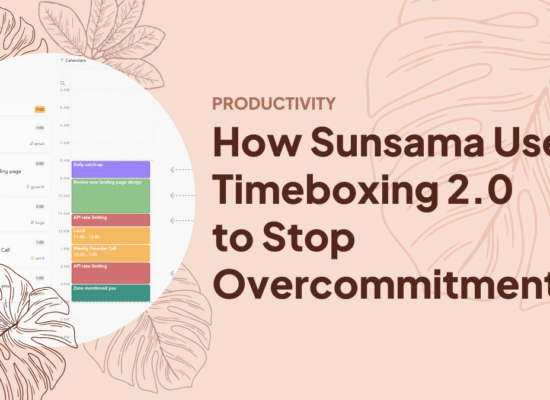Table of Contents
In today’s fast-paced work environment, the challenges faced by individuals with Attention Deficit Hyperactivity Disorder (ADHD) often go unnoticed or misunderstood. Among these challenges, one particular aspect stands out: sensory overload. Sensory overload occurs when one or more of the body’s senses experiences over-stimulation from the environment. For individuals with ADHD, this can be an overwhelming experience, impacting their ability to function effectively in the workplace.
This phenomenon of sensory overload in ADHD is not merely an individual concern; it has far-reaching implications for workplace productivity. With ADHD affecting a significant proportion of the adult population, understanding how sensory overload influences work output is crucial.
This blog post aims to unpack the effect of sensory overload on workplace productivity among individuals with ADHD, offering insights for both employees and employers.
As we delve into this topic, we hope to shed light on effective strategies for managing sensory overload, ultimately creating a more inclusive and understanding work environment.
What do you need to know about ADHD?
ADHD, or Attention Deficit Hyperactivity Disorder, is a neurodevelopmental disorder characterized by persistent patterns of inattention, impulsivity, and hyperactivity that interfere with functioning or development. The symptoms may manifest as frequent forgetfulness, difficulty staying focused, excessive restlessness, or making impulsive decisions.
Each individual with ADHD experiences these symptoms differently, and the condition can impact every aspect of their life, including their work.
One aspect that often comes into play with ADHD is sensory overload. Sensory overload in ADHD can occur when individuals are exposed to a variety of stimuli at the same time, causing them to become overwhelmed, anxious, or distracted. This sensory overload can be triggered by various factors in the workplace, such as bright lighting, loud noises, or even a high volume of tasks.
ADHD affects approximately 4.4% of the adult population in the United States, according to the National Institute of Mental Health. This indicates that a significant number of individuals in our workplaces may be trying to navigate the challenges of ADHD and sensory overload daily.
As we navigate through this topic, remember that understanding and accommodating these challenges can lead to more inclusive workplaces and enhanced productivity for all.
Sensory Overload: What is it?
Now, let’s focus on a key element of our discussion: sensory overload. Sensory overload is a state where one or more of the five senses are stimulated to the point of being overwhelmed. This overload can stem from various sources, such as loud sounds, intense lights, or crowded spaces.
In our technology-driven era, even an influx of digital information can trigger sensory overload.
How does sensory overload relate to ADHD?
To put it simply, people with ADHD often have heightened sensitivity to environmental stimuli. This means they may experience sensory overload more frequently and intensely than those without the condition.
For example, they might find office chatter or the hum of fluorescent lights more distracting. An influx of emails could send them into a state of overwhelm. This sensory overload can cause difficulty concentrating, increased anxiety, and even physical discomfort, impacting their overall workplace productivity.
Understanding sensory overload and ADHD is the first step towards managing its impact in the workplace. With this comprehension, we can begin to devise strategies that help individuals with ADHD navigate sensory overload, leading to enhanced focus, comfort, and ultimately, productivity.
ADHD and Increased Susceptibility to Sensory Overload

ADHD and sensory overload regularly go hand in hand. When you have ADHD, it is not just about attention deficit or hyperactivity. Many individuals with ADHD also have a heightened sensitivity to their surroundings. Their brains struggle to filter out irrelevant sensory information, which means they frequently take in more sensory data than others. This can lead to sensory overload, where the brain is overwhelmed by the amount of input it’s receiving.
For instance, someone with ADHD might be trying to focus on a task at work. But the hum of the air conditioner, the flicker of a faulty light, the clatter of keyboard strokes – all these can scream for attention, causing a sensory overload. This overload can lead to increased anxiety, loss of focus, and reduced productivity.
Real-Life Examples
To illustrate, let’s consider a case study.
Emma, a software developer with ADHD, often struggles to focus on her open-plan office. The buzz of conversation, the frequent interruptions, and even the brightly lit environment can trigger sensory overload, making it difficult for her to concentrate on her coding tasks. This not only impacts her personal productivity, but can also delay team projects.
Similarly, Tom, a graphic designer with ADHD, faces challenges in balancing multiple client projects. The influx of emails, messages, and deadlines can lead to sensory overload. Consequently, he feels overwhelmed and anxious, impacting his creativity and productivity.
These real-life examples underscore the significant impact of sensory overload in ADHD on workplace productivity. By recognizing these challenges, we can work towards creating strategies and work environments that better support individuals with ADHD.
Sensory Overload and Its Effects on Productivity
Sensory overload can significantly influence an individual’s productivity in the workplace. The flood of sensory stimuli can make it difficult for those with ADHD to maintain focus on a single task.
The result?
Tasks may take longer to complete, or they might be left unfinished, affecting overall efficiency.
Moreover, constant sensory overload can lead to heightened stress and anxiety levels, impacting not just productivity, but also the overall wellbeing of individuals. The struggle to navigate sensory overload can be exhausting, leading to burnout and lower work satisfaction.
Insights from Research
Research supports these observations. A study published in the Journal of Occupational and Environmental Medicine found that adults with ADHD reported significantly more performance issues in their work, including difficulty completing tasks and lower productivity.
Another study in the Journal of Clinical and Experimental Neuropsychology found that adults with ADHD were more susceptible to distractions, which can be exacerbated by sensory overload.
These findings highlight the need for workplace strategies that can help mitigate the impact of sensory overload for employees with ADHD. By understanding and addressing sensory overload, we can create environments that foster improved focus, efficiency, and overall productivity.
Remember, by taking steps to alleviate sensory overload, we’re not only boosting productivity – we’re also promoting inclusivity and wellbeing in the workplace.
Practical Tips for Individuals

Boosting productivity among individuals with ADHD starts with self-management strategies.
Here are some practical tips to manage sensory overload:
- Break tasks into manageable parts: Breaking down tasks can make them feel less overwhelming, helping you focus better and manage your workload more effectively.
- Use noise-canceling headphones: If noise triggers your sensory overload, consider using noise-canceling headphones. They can help reduce environmental noise and increase your ability to concentrate.
- Regular breaks: Regular short breaks can give your brain time to rest and prevent sensory overload.
- Organize your workspace: A clutter-free workspace can reduce visual stimuli, helping you focus better on your tasks.
Creating an ADHD-Friendly Work Environment
Employers also play a crucial role in managing ADHD in the workplace.
Here are some suggestions to create a more inclusive and productive environment:
- Flexible work arrangements: Offering flexible work hours or the option to work remotely can help employees with ADHD manage their symptoms better.
- Quiet spaces: Providing quiet, distraction-free spaces in the office can help employees who struggle with sensory overload to focus on their tasks.
- Training for managers and coworkers: Awareness and understanding of ADHD can promote a more supportive and inclusive work environment. Consider providing training about ADHD and sensory overload.
- Promote mental health: Encourage open conversations about mental health in the workplace. Provide resources such as Employee Assistance Programs (EAPs) that can support employees dealing with ADHD or other mental health issues.
Conclusion
We’ve explored the intersection of ADHD and sensory overload, and its impact on workplace productivity. We’ve delved into how sensory overload in ADHD can make focusing on tasks challenging, leading to decreased efficiency and increased stress.
However, by understanding these challenges and implementing strategies to manage sensory overload, we can boost productivity and create a supportive work environment for individuals with ADHD.
The Path Forward: Embracing Inclusivity and Mental Health at Work
Our discussion underscores the importance of embracing inclusivity at work, particularly in the context of ADHD and sensory overload. As employers and colleagues, we can make a significant difference by fostering an understanding and supportive work environment for individuals grappling with these issues.
Similarly, as individuals with ADHD, knowing how to manage sensory overload can empower us to work more effectively and advocate for our needs.
Creating a Good Work Environment for People with Mental Health Issues
We should continue to have open dialogues about mental health in the workplace and strive to make our work environments more accommodating for all. It’s not just about boosting productivity – it’s about respecting and acknowledging the diverse needs and experiences of our workforce.
Remember, every step we take towards understanding and managing ADHD and sensory overload in the workplace is a step towards a more inclusive and productive work environment. Let’s continue to learn, adapt, and grow together in this journey.







No Comment! Be the first one.